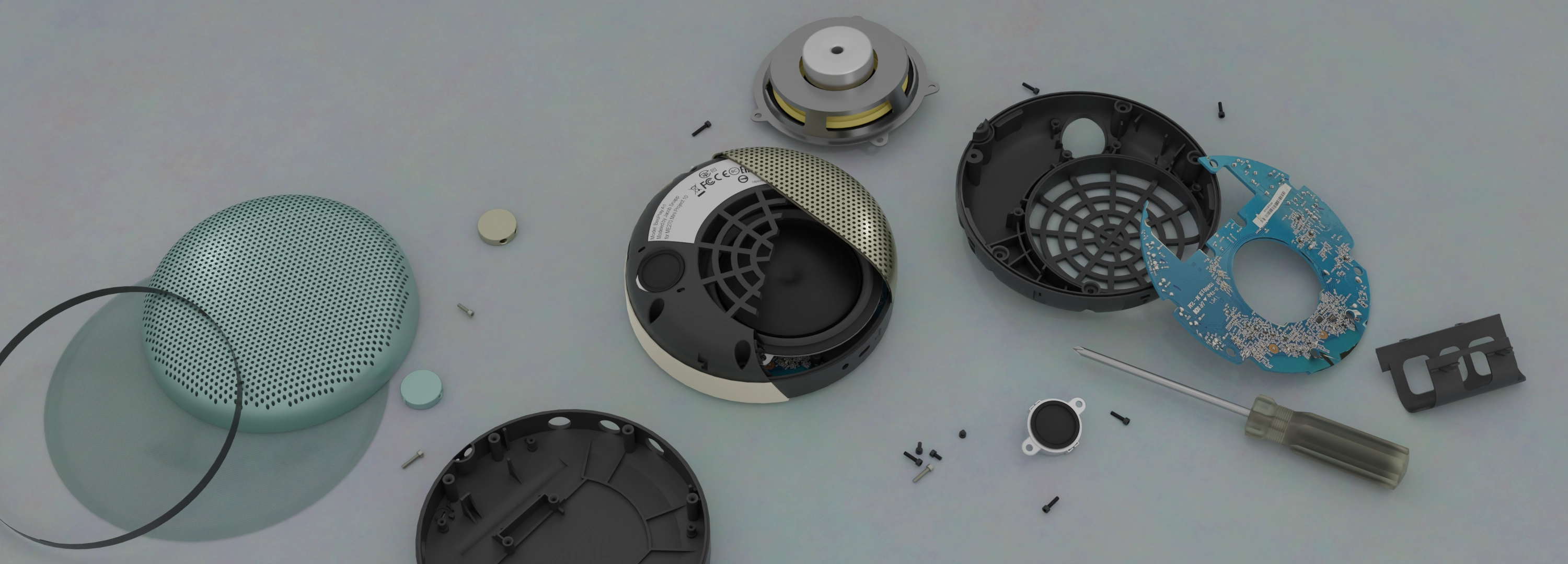
Speaker Casing Redesign
UIUC-ME270 : Mini Project 10
Improved BeoPlay A1 portable speaker casing.
March 2019
Summary
In ME270 [Design for Manufacturability] at UIUC, my class was tasked with finding an item with 6 or more parts, taking it apart, building it in CAD, running a cost analysis, and then improving on the design while adhering to design for manufacturability standards. I decided to model my portable speaker, the BeoPlay A1. This appealed to me since at the time I was trying to get better with CAD software. I had recently attempted to CAD a GPU fan and was entertained by the challenges the curved blades had proposed, this speaker felt like the natural next step in an attempt to become skilled in Solidworks.
In short, for this project I took apart my portable speaker, used calipers and drawings to help measure and model the many parts of the speaker, considered the thermal conditions the speaker operated under and attempted to resolve the speaker’s overheating and interior plastic durability issues.
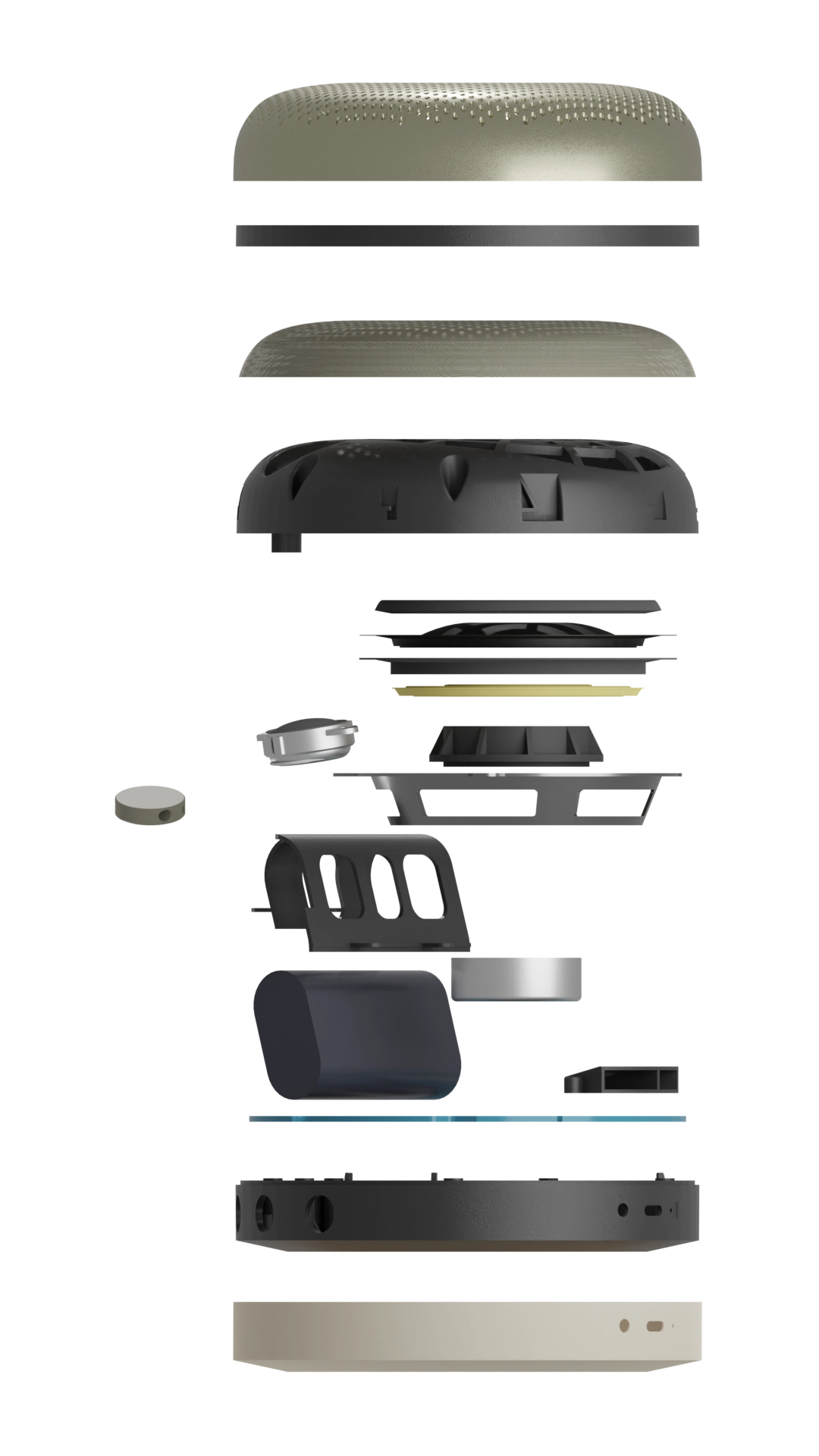
Exploded View Rendering of the modeled BeoPlay A1 Portable Speaker
Deconstructing the Speaker
It took me a few minutes to figure out how the speaker grill was connected to the upper casing, the grill simply needed a good counter-clockwise twist. Upon unscrewing the upper casing and literally cracking the speaker open, I learned that this speaker was not designed with repairability in mind. Most of the screws were over-tightened, this applied too much strain on the plastic casing, and made the hard plastic of the screw inserts susceptible to breaking. The secureness of these screws is critical in preserving optimal sound quality, and room for the upper and lower cases to vibrate would result in extraneous frequencies while listening to music. The screws connecting the main woofer to the upper casing were also over-tightened, the severed connection resulted in a poor bass response. This damage upon deconstructing was unfortunate, but certainly highlighted something in the speaker’s design to fix. I later managed to improve the sound quality of this broken speaker by cutting out foam inserts to apply pressure for closure in place of the screws.
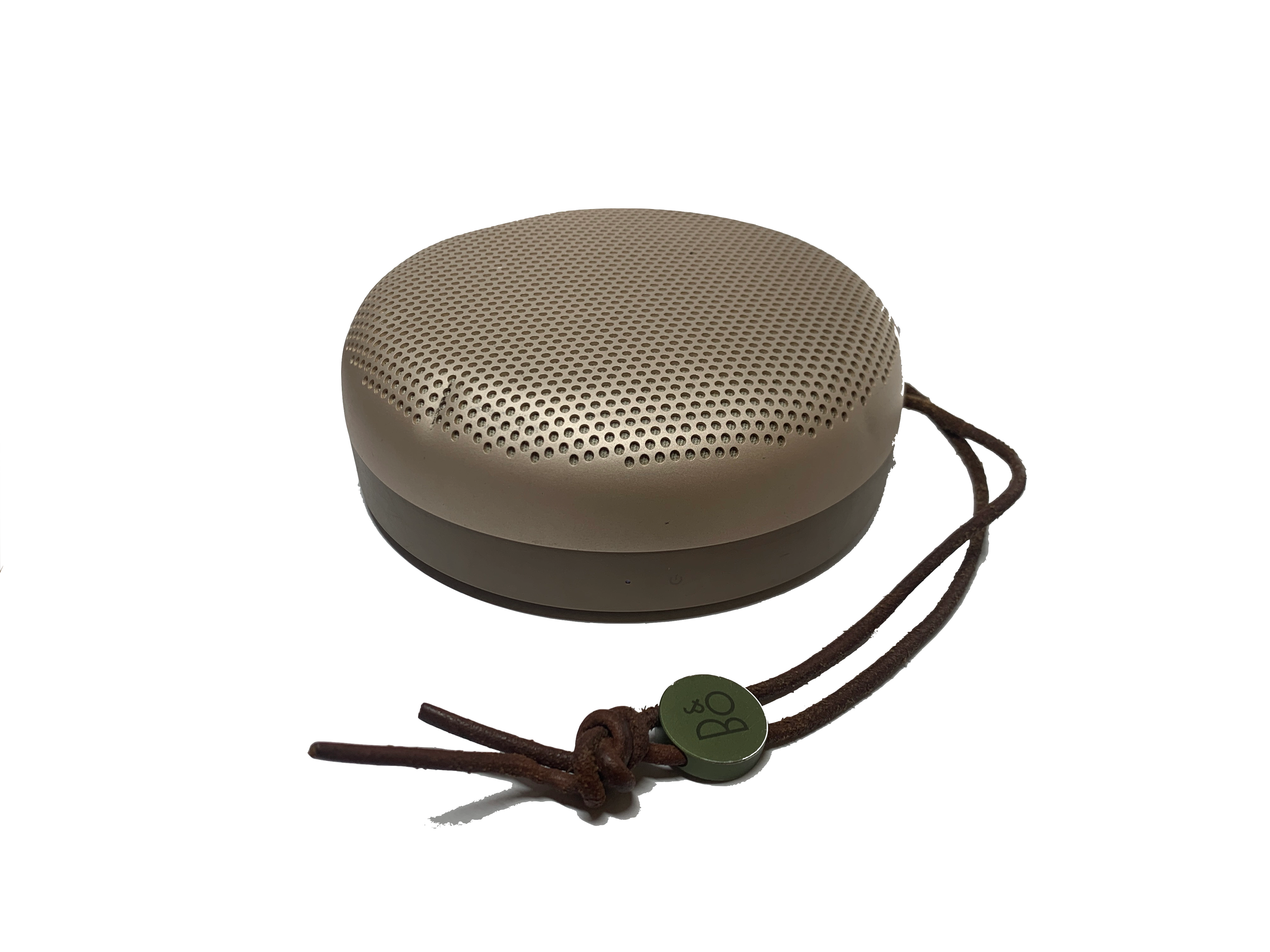

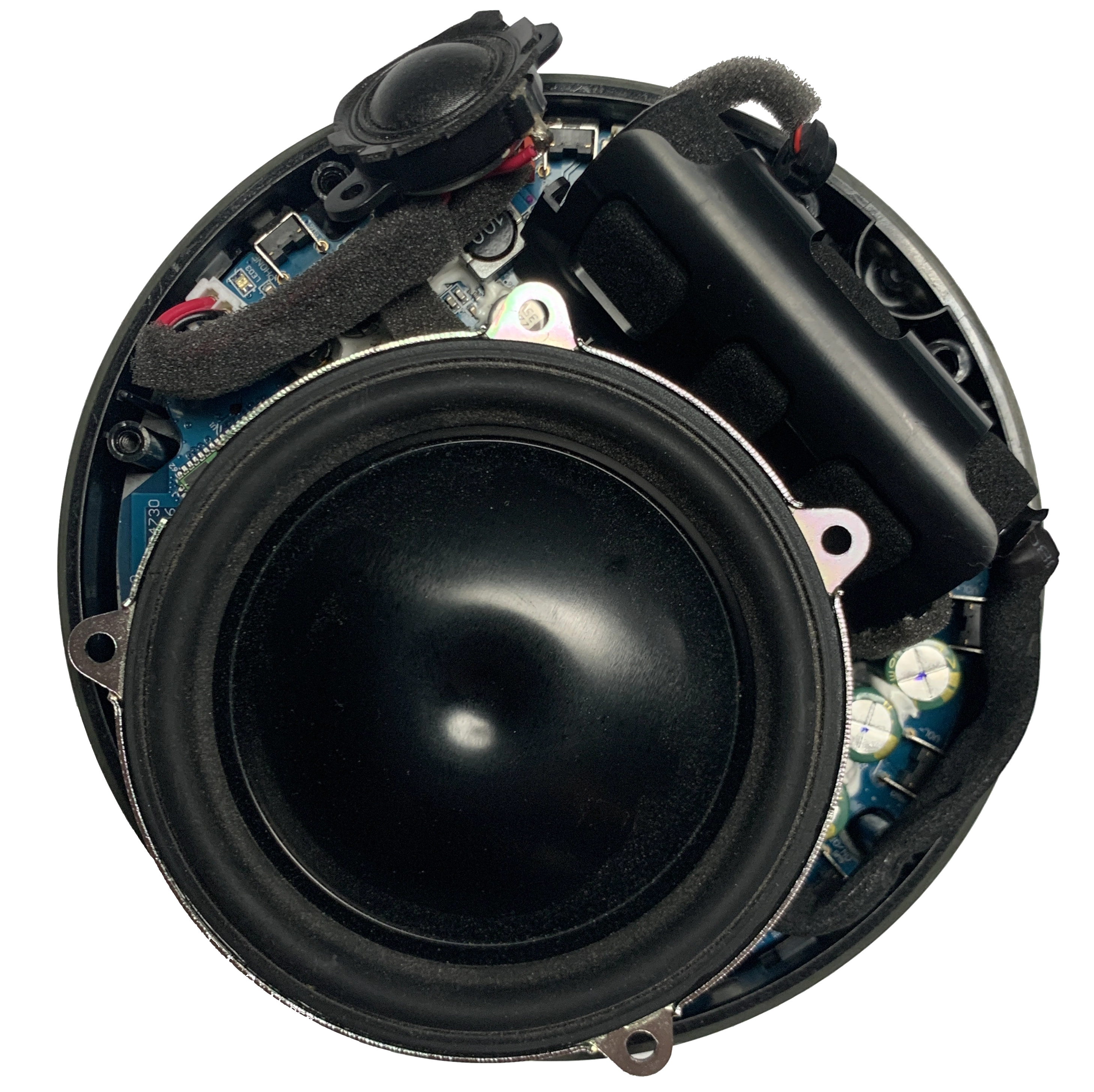
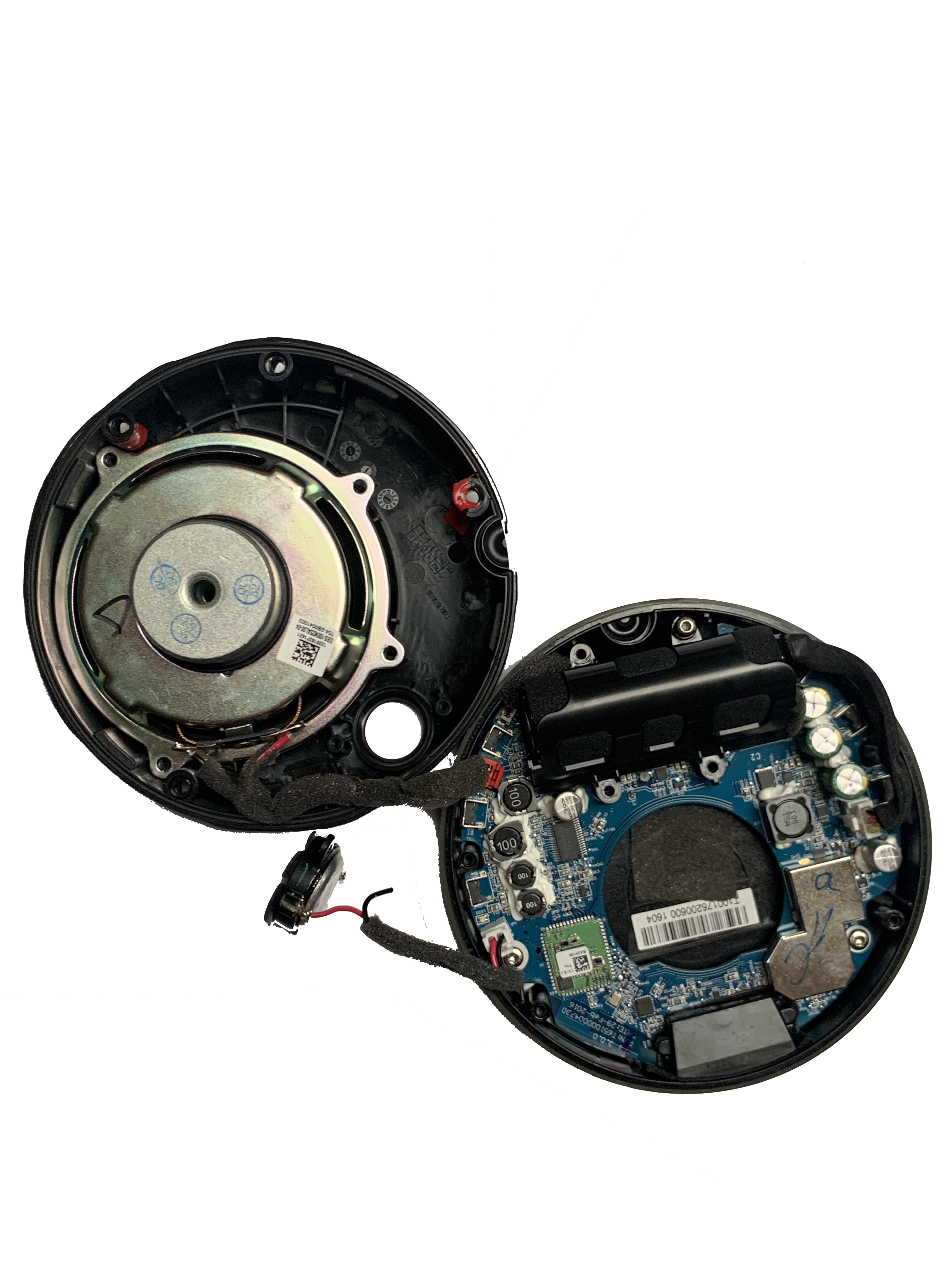
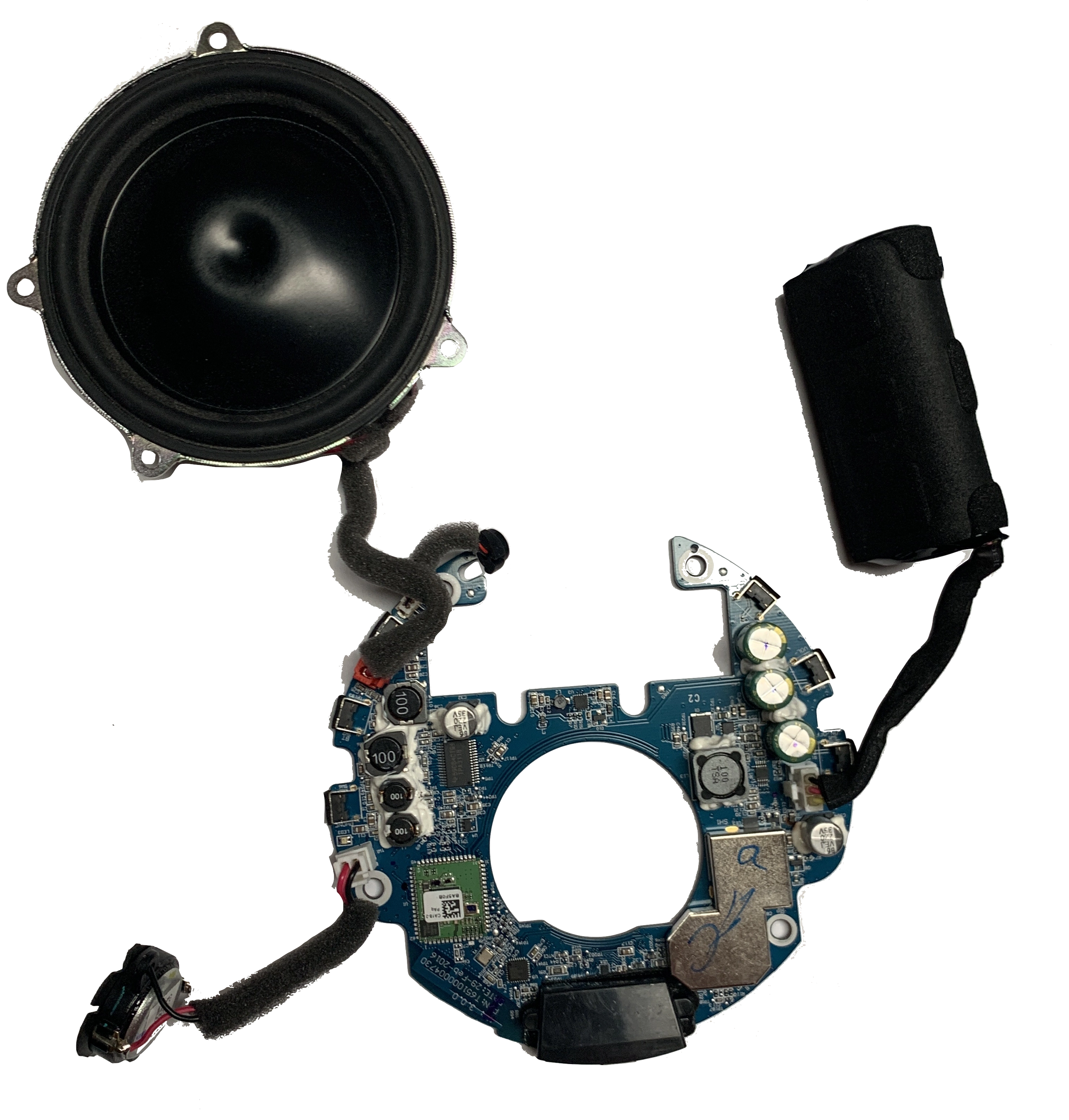
Photo of the BeoPlay A1 portable speaker
CAD Modeling
Modeling the speaker quickly proved to be the challenge I was hoping it would be. It took a while to CAD all the internal features, replicate curved features, and accurately measure the angle of the speaker’s axis.
Refinements
My redesign focused on removing heat from the system, reducing build time by joining parts where possible, and generally improving repairability and durability.
Cost
The cost of the speaker with my modifications was just about the same as the speaker’s initial costs. I used the software APriori to determine the cost of building the model, an important note is that there was no way to indicate the proper building method of the speaker grill to APriori, so its cost was assuming we machined a deep drawn sheet of aluminum instead of machining and then deep drawing the part. If I had a better grasp of the software at the time I would have priced this as two separate parts, one a machined flat sheet and then the same sheet deep drawn, and determined my own price conclusions from there.
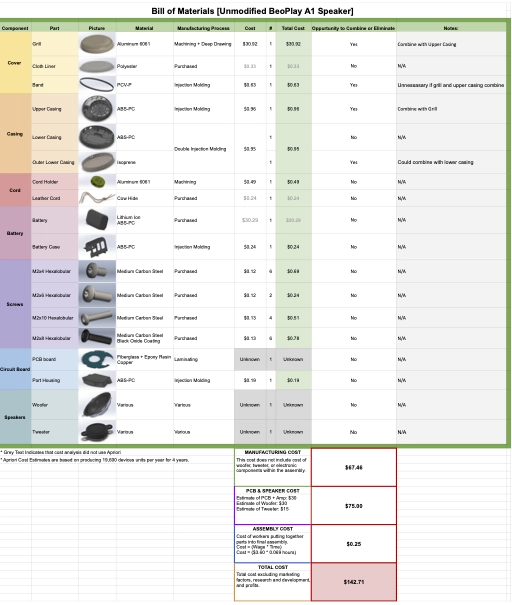
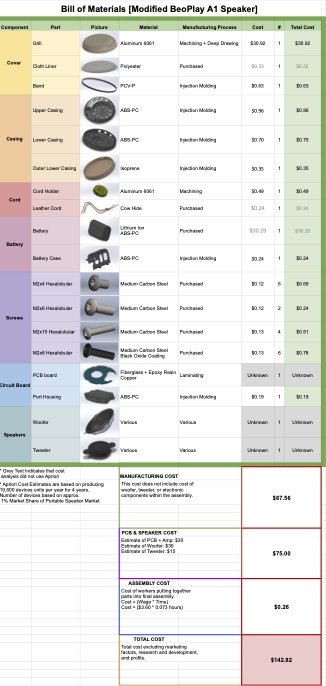
Calculated bill of materials for the unmodified speaker
Conclusion
I learned a great deal from this project, in particular I developed a deep understanding of the processes required to CAD a more complex shape. I realized the importance of considering geometrical dependencies and modeling in a manner that is deeply parameterized and modular, so that in the event of a mismeasurement, I can avoid starting from scratch. I also learned the importance of repairability. For as much as I loved this speaker’s sound quality, I’ve determined that it was after all a fragile portable speaker, and those two adjectives should never sit so closely. This project has taught me to consider the internal components more deeply when designing and even considering purchasing something. I found myself asking more often: “how repairable is this?”
RESOURCES
No available resources
DOWNLOADS
No available downloads
Table of Contents
- Summary
- Deconstructing the Speaker
- CAD Modeling
- Refinements
- Cost
- Conclusion
RESOURCES
No available resources
DOWNLOADS
No available downloads